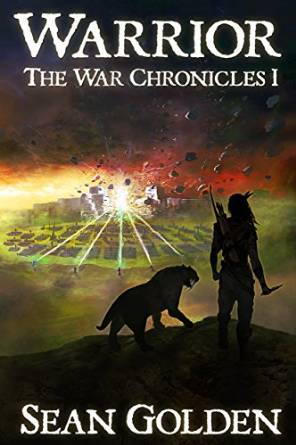Guest post by Renee Bennett.
Ever read about a ‘dystopian steampunk mystery’ or ‘epic fantasy conspiracy thriller’ or ‘romantic horror with an ecopunk twist’ or ‘weird West, with zombie superheroes’!
Yeah. Genre is complicated.
When people talk genre, they talk about story content: a love story, or aimed at kids, or contains rocket ships. They mean marketing categories, and marketing categories mean audiences.
Different audiences expect different things from different genres. People looking for love stories want sentiment, kids want kid stuff, and there is nothing so satisfying to the rocket-seekers as a really good blast-off. But what makes each genre what it is? And if you have blithely written a tale of first love between teenagers who are flying to Mars, which genre – which marketing category – does the tale belong to, and why?
It starts with conflict.
All stories have a main conflict. Orson Scott Card in ‘How To Write Science Fiction And Fantasy’ describes a tool to categorize a story’s main conflict: he calls it the MICE Quotient.
MICE stands for Milieu, Idea, Character, and Event. Each story type has its main conflict arise from a different story element. All stories will have all of these elements (mostly; exceptions apply for avant garde or experimental works), but they will weight them differently, depending on what their primary audience wants.
Milieu stories generate their conflict from setting and world-building. This is the conflict engine behind ‘big’ stories – epics, real and fantastical. It is also present in survival stories, war stories, and historical stories. The Lord of the Rings is a Milieu story: its main source of conflict is the motion of nations and the transformation of whole peoples in response to the war with Sauron.
Idea stories generate conflict through the exploration of ideas or information. The main character will start in a state of low information and end in a state of better understanding. The story is a puzzle: once it is solved, it’s over. This pattern is widely used in science fiction, particularly hard science fiction, and in detective stories. Andy Weir started The Martian from the seed of ‘What would happen if an astronaut were stranded?’ and built the rest – including the main character – from elements based on that premise.
Character stories generate conflict from within the characters, or from the relationships between them. They are intimately involved with characters facing – or refusing to face – their lives, choices, and selves. The novel Ordinary People begins with Conrad Jarrett’s return home after having tried to commit suicide in the wake of his brother Buck’s death, and it shows the ways he and his family confront and come to terms with this history – or fail to come to terms with it.
Event stories begin when a chaos agent is introduced into the main character’s life and end when the chaos agent is resolved. This agent can be another character, such as a love interest in a romance, or it can be an object (Maguffin) such as a treasure map or a packet of secret documents, as in adventure stories or thrillers. Consider the movie TITANIC, where Rose’s life changes completely when she meets Jack, and changes again when he dies. Against this, even the sinking of the ship (itself an Event plot) is secondary.
Note that last sentence. In a story which contains more than one plot, one plot will be the main plot, and all others will be subordinate. In fact, most stories will rank them.
For instance, in THE MARTIAN, the Idea of being castaway leads; the next most important element is Milieu, because Mars provides the obstacles main character Mark Watney faces. A number of Event subplots follow as obstacles are encountered and overcome. Watney’s Character was built last, from the question, “Who does this person need to be to survive this story?”
So, how does all this help decide which genre a piece truly is?
The main genres are Fantasy, Horror, Literary, Mainstream, Mystery, Romance, Science Fiction, Thriller, and Western. Each of these lends itself to the MICE Quotient in different ways. Sub-genres can also be ranked this way, but we don’t have space for that discussion.
Core works in each genre tend to rank MICE as follows:
Fantasy: Milieu, Event, Character, Idea.
Horror: Event, Character, Milieu, Idea.
Literary: Character, Idea, Milieu, Event.
Mainstream: Character, Event, Milieu, Idea.
Mystery: Idea, Event, Character, Milieu.
Romance: Event, Character, Milieu, Idea.
Science Fiction: Idea, Milieu, Event, Character.
Thriller: Event, Milieu, Character, Idea.
Western: Milieu, Event, Character, Idea.
You may notice that some of these are similar. Fantasies and Westerns rank MICE items the same, as do Horror and Romances. The difference comes down to expectations and the use of tropes.
Westerns are always set in some version of the ‘Wild West’, either past or present, or in a setting such as the Australian Outback which evokes similar images of rural living, wide open spaces, and individuality. Fantasies, however, do not restrict their settings in this way. They will always contain some other element, such as supernatural beasts or magic, which takes the story out of the familiar world we know and place it firmly in a different one. The changes may be minor, such as vampires living next door, or major, as in completely realized secondary worlds.
If the two genres combine, as in a Wild West Fantasy, then the main genre is considered Fantasy, because it is less restrictive.
Horror always has disquiet at its core. Its inciting Event renders the main character unsafe in body, mind, or both, and the story resolves when the character escapes or is overcome. A Romance Event is explicitly the meeting between main character and prospective mate, and the story is always about the decision to accept or decline that prospect.
In stories which combine Horror and Romance, where the inciting love interest is the Horror element and where the story ends unhappily, the story is a Horror with Romance overtones. Core Romances are comedies – they have happy endings. Unhappy endings are tragedies, which are acceptable in Horror, so the expectations of the audience will be better met there.
And so it goes. Literary works need in-depth analysis and exposition of Character first and foremost, and afficionados of the genre will forgive works which provide excellence in this while scanting everything else, which is why experimental and avant garde works (such as plotless novels) exist. Literary is also the genre which puts a premium on flashy writing for the sake of flashy writing.
Mainstream looks for Character first, but readers of this genre will tolerate only minor deviations from ‘real storytelling’, meaning these works will not scant Events, Milieus, etc. These audiences prefer ‘real world’ events or settings, but the category also contains works which ‘transcend genre’ – which only means the publisher thinks their appeal is broad enough that even non-genre readers will enjoy them.
Mystery begins with a puzzle and the character who will solve the puzzle. In this genre, Idea is better described as Information, where the villain of the piece has all of the information and the hero must discover that information, despite all obstacles.
Science Fiction, particularly Hard Science Fiction, starts with an Idea, a “What if…?” question, and revolves around the implications and permutations of a world in which the answer is “True.” However, Soft Science Fiction, which includes most Space Opera and -punk sub-genres, such as Steampunk, Cyberpunk, Dieselpunk, Decopunk, et al, tends to follow the pattern of Fantasy. Both types, however, have science – or science-like – Milieus, often in the future. Fantasy settings tend to be either past or present, and rarely feature science.
A Thriller always has a ‘thrilling’ element to its inciting Event, usually a matter of life or death and often containing a ‘ticking clock’ against which the characters contend. Acceptable settings, characters, and subordinate event types vary. ‘Typical’ thrillers are set in the present and involve at least one character, main or secondary, who is an agent of authority (government, police, etc.) and whose actions either oppose the disaster or work to assure it. Think spies stealing government secrets, terrorists set on mass killings, or anyone trying to avert a foreseeable catastrophe.
In mash-up work, the main genre is almost always going to be the least restrictive one – the need to abbreviate or eliminate inconvenient tropes will hit narrower categories harder. Combinations where MICE rankings are at extreme odds to each other pose special difficulties: Literary and Hard Science Fiction, for instance, do not mix well because Literary wants deep exploration and description of characters, accompanied by linguistic gymnastics, and Hard Science Fiction wants deep exploration and description of ideas told as simply and clearly as possible. Mixing genres, one must consider which audience is served first and best. A story suited to a narrow audience but marketed to a wider one is likely to be rejected.
But … do what you want. Write the story your way and worry later about its genre; it’s your story first. While I can point out different structures and what audiences see in them, they don’t matter until you have a story for its first and most important audience: you.
What do you look for?
Renée Bennett arrived in Calgary in 1972 and has been endlessly entertained watching the city grow ever since. In 1992 she joined IFWA, the Imaginative Fiction Writers Association, and is now their vice president. She runs In Places Between, the Robyn Herrington Memorial Short Story Contest, and coordinates the Author Liaison table at When Words Collide. Her own fiction has appeared on CBC Radio, Year’s Best Fantasy, and Rigor Amortis, among other places, and she has been a finalist in Canada’s Aurora Awards five times.

 “Hey! I hear you wrote a book. What kind is it?”
“Hey! I hear you wrote a book. What kind is it?”


